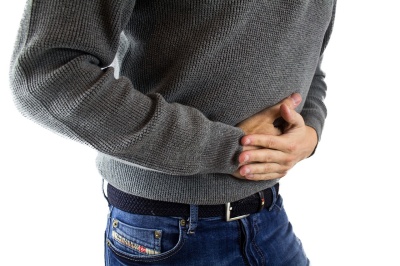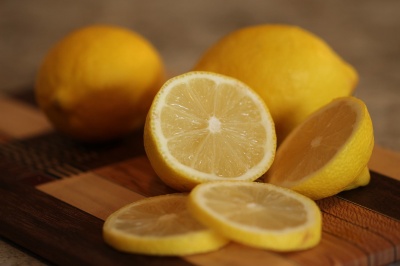Nauseas and vomits, what need to know?
Lee in complete content in Infermeravirtual.com
1. Differences between nauseas and vomits

Nausea: It is an unpleasant sensation in the throat and in the stomach that often precedes to the vomit. It usually accompanies of other symptoms: paleness, sudoración, excessive salivation and, sometimes, decrease of the blood pressure and of the pulse rate cardiac by minute.
Arcades or effort to vomit: Arcades are contractions intense of muscles of the abdominal wall in order to creating the necessary pressure to vomit. They can present with the vomit, to precede it or to follow it.
Vomit or emesis: It is the vaciamiento or the fast and forceful expulsion of the gastric content and, sometimes, of the intestinal content via the mouth.
2. How long hard the vomit?
- Acute: They last less than a week.
- Chronic persistent: They last a week or more.
- Chronic recidivantes: They last more than a week and they alternate episodes emetics with asymptomatic periods between 5 and 10 days of duration.
3. What signs and symptoms us tell?

- Paleness.
- Sudoración.
- Rise of the salivation.
- Changes of the cardiac pulse rate.
- Changes of the figures of the blood pressure.
4. What symptoms accompany?
According to the cause that causes nauseas and vomits:
- Abdominal pain, fever and/or diarrhea,
- Headache, stiffness in the occiput, petechiae in the chest (red stains, small as the tip of a pin, flat and rounds under the caused skin for a hemorrhage) and fever.
- Chest pain, when the cause is related to a cardiac problem.
- Acúfeno (humming of heard) and/or hearing loss.
According to the time of evolution:
- Dehydration: It demonstrates via dryness in the mouth, thirst sensation, micturitions little frequent ones or scant and dark urine, sunken eyes and loss of the normal resilience of the skin.
- Electrolyte disturbances: They demonstrate with weakness, tiredness, irritability, convulsions, alteration of the level of conscience, thirst, cramps, etc.
- Malnutrition: Accompanied by weight loss
- Anorexia: Loss of appetite.
- Aesthenia: Tiredness.
- Erosions of the dental enamel and caries: Related to the repeated contact of the dental enamel with the acid of the vomits.
5. What must do...?
If they appear nauseas and vomits:
- Avoid to drink and to eat.
- Breathe deep and slowly inspiring for the nose and expelling the air for the mouth.
To prevent a new vomit:
- Maintain a relaxed and untroubled atmosphere, ventilated good and without unpleasant smells.
- Reduce or delete the personal factors that trigger or increase nauseas and vomits, as, for example, the anxiety, the fear, the fatigue and the pain.
- Avoid sharp postural changes in the event of having vertigo.
- Avoid to turn in before two hours later of eaten credit.
After vomited credit:
- Rinse the mouth with abundant fresh water.
- Clean remains of the vomit and to put special attention in deleting the smell.
- Expect more or less four hours without eating nor to drink and, then, to take small liquids sips, preferably of water rather cold, in small amounts.
- If liquids are tolerated, to continue with foodstuffs of easy digestion, in small amount, 5 or 6 times a day, and to avoid extremes of temperature, that is, that they are not nor very cold nor very hot.
- Maintain frequent standing periods and to try to avoid unnecessary activities after meals.
- Use techniques of relaxation (as the progressive muscular relaxation or the visualisation of mental scenes nice) and tactics of distraction (hobbies, reading, sudokus, etc.) in the periods in which has not nauseas nor vomits.
- Use comfortable clothes (to avoid to take adjusted garments: corset, belt or tie) during and after meals.
6. Dietetic recommendations

- Avoid to eat and to drink while they persist nauseas and vomits.
- Expect between two and four hours, after vomited credit, to restart the takeover of foodstuffs.
- Restart the takeover of foodstuffs in the shape of liquids:
- Liquids are owed to take in short sips and to room temperature or annealed.
- Recommended liquids are: water, infusions, juices not very acidic and non fatty broths.
- Avoid alcoholic drinks and the fizzy ones.
- Sometimes it is useful to take liquids 30 minutes before the food instead of taking during the same one.
- Take the homemade re-issuing solution oral that is elaborated with following ingredients:
- 1 boiled water litre
- the juice of a lemon
- 2 spoonfuls sugar tureens
- 1 teaspoon of baking soda
- 1/2 teaspoon of salt
- This homemade solution is indicated to restart the takeover of liquids and assistance to prevent the dehydration and the loss of salts.
- Continue eating foodstuffs of easy way digestion progressive, if liquids have been tolerated. Foodstuffs of easy digestion as they are the meat of chicken and turkey, the white fish and milk skimmed, the dough, the cooked potato, etc. Take them in small amounts and frequently.
- Chew slowly and to take the time necessary to eat.
- Make good use of moments of the day in which the person has more appetite and is found better to eat.
- Follow these dietetic recommendations when the takeover of foodstuffs is resumed:
- Breakfast-tea party: toasts or cookies with little fat, small sandwich of ham of York or turkey, fresh cheese, skimmed milk with decaffeinated coffee, infusions of camomile, etc.
- Food-dinner:
- Starters: dough, vegetables to the steam, boiled rice, creams of vegetables, degreased and soups consommes.
- Main courses: omelettes, roast chicken with potatoes to the steam, pechuga of chicken, filet of veal, sole, hake to the iron, ham of York, etc.
- Desserts: fresh fruit except citrus fruits, fruit salad of fruits, apple sauce and milk skimmed.
- Try to take live foods or cold as a gelatine, cheese ricotta or cottage cheese, yogurt, sherbets, cold sandwiches, pasta salads or of potatoes, if they do not crave hot meals.
- Cook preferably to the steam. The meat and the fish, to the iron.
- Avoid fried, coated in and sauces, as well as fatty foodstuffs, very spiced or that they produce gases, such as brócoli, cauliflower, cucumber, green pepper or legumes dry.
- Control the body weight, since it can vary if vomits are persistent.
7. Signs of alert
- Control the dehydration, he owes control closely the appearance of indicator signs of this (dry mouth, thirst sensation, scant and dark urine and dryness of the skin).
- If vomits are persistent, to watch the body weight, the tiredness, tingles in the legs, the thirst sensation, the severe headache, etc. and to apply all measures that allow a better control of the situation of health.
- Consult with the health professional if vomits:
- They are very abundant, repetitive and prolonged in the time.
- They contain bile, blood and/or remains of faeces.
- They go accompanied by other symptoms: headache, fever, stiffness of occiput, pain of the chest, acúfenos, etc.
- Take the medication indicated by the team of health, to prevent and/or to control nauseas and vomits, and to avoid to take medication on a self-employed basis (autoto administer medication).
8. Clarifications

- Nauseas and vomits not are always synonymous of illness. They can be a faddish process that does not compromise the health of the person.
- It is not healthy to eat fast and without chewing.
- It is not advisable to do a copious food or very abundant.
- Is owed to expect the advised time (between 2 and 4 hours) after vomited credit to begin to drink and eat.
- It is appropriate to restart the intake after vomits in the shape of liquid foodstuffs of easy digestion as the water or the camomile.
- It is not appropriate to turn in immediately after eating. It promotes the appearance of ebb of the content of the stomach to the mouth.
- It is not recommendable to do physical exercise immediately after eating.
- He should not induce the vomit after the intake.
- It is not recommendable autoto administer medication.
